Hailey Community Climate Challenge
Learn about other climate showcase communities.
Hailey, Idaho
Federal Funding: $472,429
Project Timeline: January 2010 – November 2014
- Project Summary
- Community Characteristics
- Results
- Lessons Learned
- Sustainability/ Replication
- Photos
Hailey, Idaho, is showing that any small community can reduce greenhouse gas (GHG) emissions from municipal and community sources by forming a strong alliance of community partners and implementing coordinated GHG reduction projects. All of the projects built upon existing climate change mitigation efforts in Hailey and contributed to significant and continued GHG reductions.
The Hailey Community Climate Challenge helped to build community and government capacity within to reduce GHG emissions, achieving many benefits, and is easily replicable by other small communities. The project elements included:
- Energy Audit & Retrofit Program with Renewable Energy Incentives
- Green Building Demonstration
- Solid Waste Management Capacity Building
- Downtown Bike Share System & Energy-Efficient Streetlight Upgrade
- Hailey Government Capacity Building
- Education, Outreach and Replicability
With the Climate Showcase Communities grant, the City built on existing commercial and residential energy audits and an energy efficiency retrofit program funded by the Idaho Office of Energy Resources. Hailey expanded funding for the program to provide additional audits and retrofits and is also funding renewable energy system rebates to three individuals per grant cycle. The project includes biannual community workshops on ways to improve energy efficiency and information on existing financial incentives and ways to implement small-scale renewable energy systems. The City issued 38 rebates under its Energy Audit and Retrofit Program called Save-A-Watt.
Hailey also demonstrated the benefits of green building for the community by capitalizing on an approved plan for a LEED-certified interpretive center at the Hailey Rodeo Park, located at Hailey's city entrance. By working through perceived barriers about the cost and difficulty of building green, the demonstration project is helping encourage higher building standards for future city and community development projects. This demonstration project involved extensive stakeholder outreach to enrich community understanding of green building concepts. Outreach included: an interpretive exhibit at the new center on how the project achieved LEED certification and GHG reductions and why those reductions are important; newsletter updates; media releases; and on-site demonstrations and tours.
The City continues to promote solid waste diversion through the construction recycling pilot program and assist with the demolition of houses to salvage reusable items. Hailey alleviated landfill capacity pressures and encouraged better waste management by implementing the following:
- Deconstruction/Material Salvage – Hailey increased the capacity of the Building Material Thrift Store to do the deconstruction and salvage work associated with big commercial or multifamily housing projects.
- Construction Material Recycling Pilot Program
- Plastic Bag Source Reduction – Hailey is continuing the EPA materials management grant project focused on source reduction of plastic bags (called “Just Bag It!”).
Hailey implemented a bike share system and upgraded to energy-efficient streetlights for the downtown area. The bike share system is easing congestion and reducing vehicle miles traveled, and has three stations and 18 bikes located in close proximity to the City's major park and ride transit station, the Green Building Demonstration project (southside), and a northside location near affordable housing.
Finally, Hailey raised awareness and fostered a change in consumer behavior through education, outreach, and replicability. To do so, Hailey:
- worked with the local non-profit, ERC, to coordinate the outreach and education components of the project,
- produced a 30- to 50-minute documentary film about the Challenge, and
- produced a project how-to booklet, including all elements tackled by the Challenge, for other cities to use as a guide to how they can implement similar GHG reduction activities.
Public benefits of the Challenge have been diverse and wide-ranging. GHG reductions of 284 metric tons of CO2e/year (including portions of the project that are funded by the State of Idaho) directly address climate change and protect the environment, while robust public education and outreach will engage the community, raise awareness, and foster behavior change.
Population: 7,854
Area: 3.2 square miles
Government Type: City
Community Type: Rural
Median household income: $51,728
|
Final Results |
Projected Cumulative Results |
|
|---|---|---|
|
Annual GHG Reductions |
153.4 mt CO2e |
138 mt CO2e |
|
Annual Cost Savings |
$20,928 |
$12,763 |
|
Streetlights Retrofitted |
52 |
70 |
- Staffing changes and reduction in staff were a challenge, particularly losing the City’s Grant Administrator who played a large role in organization, reporting and some project management.
- Trying to develop and market 5B Bikes was especially difficult when no bikes were available to deploy after the initial year they were launched due to software and hardware upgrades.
- Because so much of the match was donated in-kind from other organizations and individuals outside of the City of Hailey, it was difficult to ensure consistent quality performance and management of volunteers.
- Working on project elements that became more political in nature, such as the Just Bag It! project.
- The City built on existing programs and funding to expand, and develop new, initiatives
- It has been critical to the project’s success to engage the public through education campaigns.
- Partner with local business and non-profits to pool resources.
- Provide financial incentives to residents, such as rebates for energy audits and retrofits.
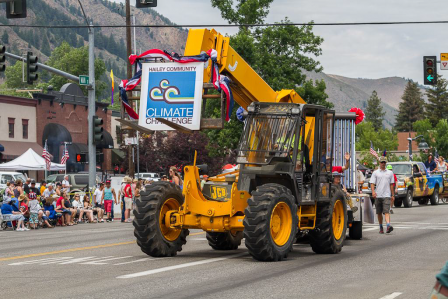 A forklift carries the Hailey Community Climate Challenge sign in the Fourth of July parade.
A forklift carries the Hailey Community Climate Challenge sign in the Fourth of July parade.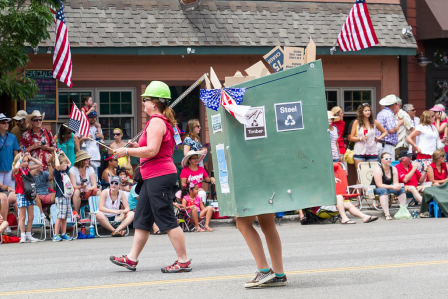 The construction recycling entry participates in the Fourth of July parade.
The construction recycling entry participates in the Fourth of July parade.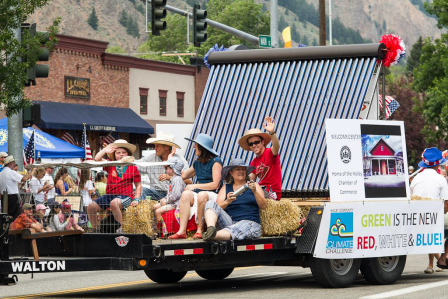 The construction recycling entry participates in the Fourth of July parade.
The construction recycling entry participates in the Fourth of July parade.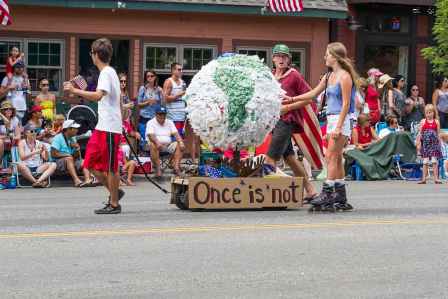 The construction recycling entry participates in the Fourth of July parade.
The construction recycling entry participates in the Fourth of July parade.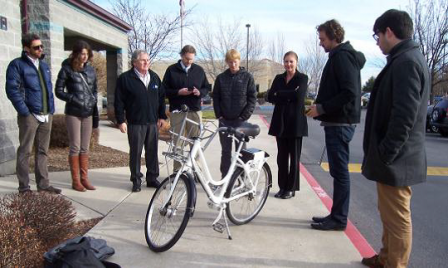 The City tested the functionality of both the software and the bikes for the Bike Share program.
The City tested the functionality of both the software and the bikes for the Bike Share program.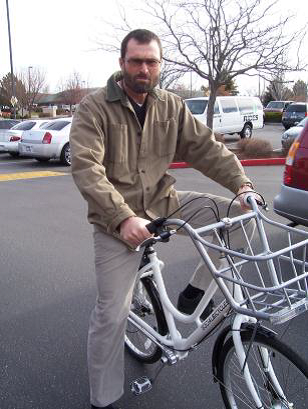 The City tested the functionality of both the software and the bikes for the Bike Share program.
The City tested the functionality of both the software and the bikes for the Bike Share program.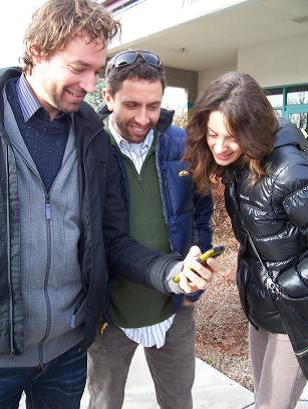 The City tested the functionality of both the software and the bikes for the Bike Share program.
The City tested the functionality of both the software and the bikes for the Bike Share program.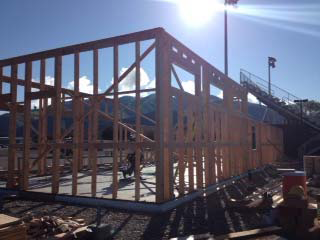 A green building demonstration project is expected to achieve LEED certification.
A green building demonstration project is expected to achieve LEED certification.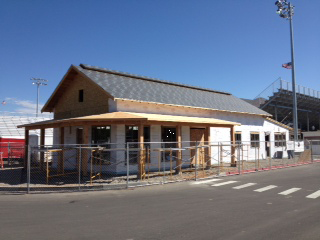 A green building demonstration project is expected to achieve LEED certification.
A green building demonstration project is expected to achieve LEED certification.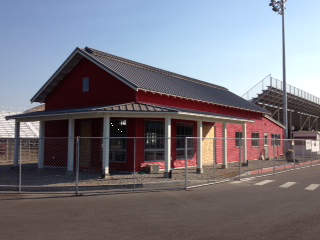 A green building demonstration project is expected to achieve LEED certification.
A green building demonstration project is expected to achieve LEED certification.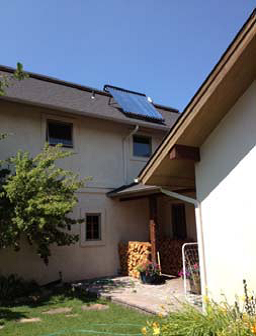 The Energy Audit & Retrofit Program has awarded one renewable energy system rebate, among other energy-efficiency rebates.
The Energy Audit & Retrofit Program has awarded one renewable energy system rebate, among other energy-efficiency rebates.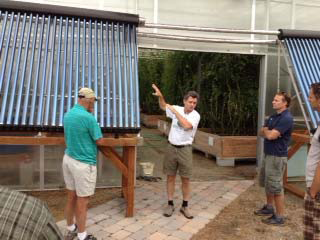 The Energy Audit & Retrofit Program has awarded one collector solar thermal project, among other energy-efficiency rebates.
The Energy Audit & Retrofit Program has awarded one collector solar thermal project, among other energy-efficiency rebates.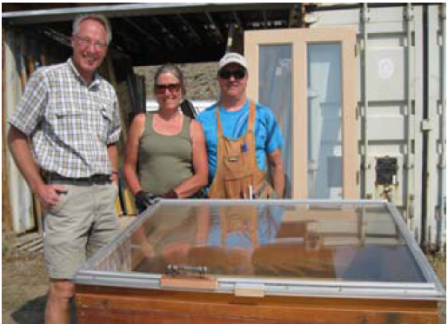
The Building Material Thrift Store (BMTS) conducted a popular workshop, Cold Frame Construction. Cold frames can be constructed using an old window, hinges, and lumber. A cold frame is used to place over a plant in a garden, to provide extra heat while the season changes into fall.
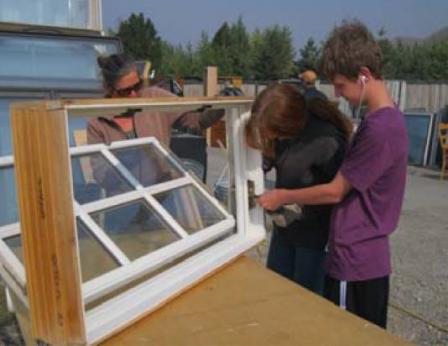
The Building Material Thrift Store (BMTS) conducted a popular workshop, Cold Frame Construction. Cold frames can be constructed using an old window, hinges, and lumber. A cold frame is used to place over a plant in a garden, to provide extra heat while the season changes into fall.
